Book Review: The Amaryllidaceae of Southern Africa
by Eric Hsu
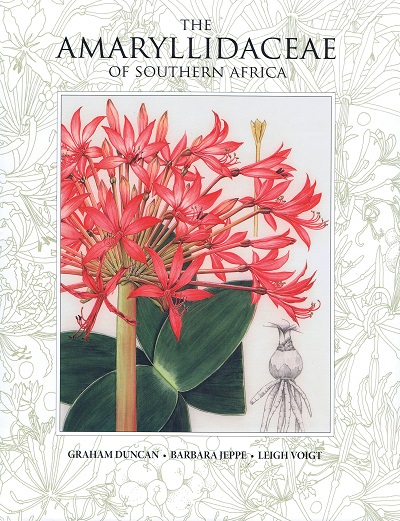
While South America claims the distinction for the center of diversity for the amaryllis family, South Africa holds it own with 18 genera and approximately 240 species. Ever since the Europeans began navigating new oceanic trading routes in search of new colonies, the ornamental appeal of the South African Amaryllidaceae has been well known to gardeners. Foremost in advancing the study of the Amaryllidaceae was the British horticulturist, botanist, and artist William Herbert who specialized in these bulbs at his Spofforth, Yorkshire home. Herbert undertook the ambitious project of delineating and describing all the known members of the Amaryllidaceae in a work that remains the only publication on the family. Subsequent work from other botanists and horticulturists examined specific genera like Cyrtanthus, Nerine, and Haemanthus - the advent of molecular work has elucidated relationships especially for a family that has witnessed intense speciation. Only in 1999 did a general picture emerged when Piet Vorster researched and published the geographical distribution and concentration of the South African Amarylliadaceae. The same publication African Plants: Biodiversity, Taxonomy and Uses included a paper on growth and flowering from Deirdre Snjiman. Now the Amaryllidaceae of Southern Africa (Kew Publishing, 2016) has come to step into the gap that brought different information previously scattered in disparate sources.
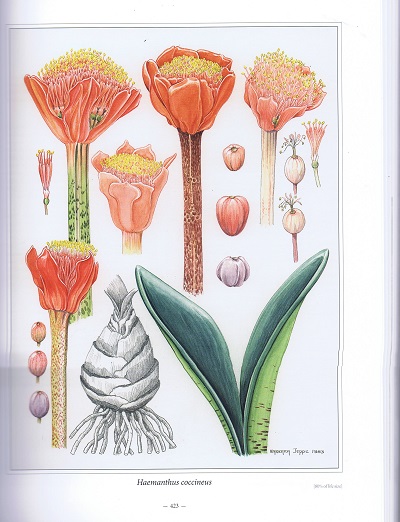
The Amaryllidaceae of Southern Africa is certainly a magnum opus on Southern Hemisphere geophytes that spans 45 years, 28 of which were devoted to botanical illustrations by Barbara Jeppe. Jeppe's daughter Leigh Voigt continued the work for the next 16 years. Graham Duncan is highly qualified to pen this monograph as he has been the Curator of the Indigenous bulb collection at the Kirstenbosch National Botanical Garden. He has the uncommon dual talent of being a botanist and horticulturist, which allows him to understand the geophytes thoroughly. If his prior monograph The Genus Lachenalia (Kew Publishing, 2012) is a good indication, then there are no doubts about the quality of Amaryllidaceae of Southern Africa (Kew Publishing, 2016). Topping 710 pages, the book weighs 1.7 pounds (0.77 kg), making it impractical to carry in the field. However, the production justifies its price of US $100, being that the paper is thick and smooth, a purple ribbon bookmark is bound to the spine, and color appears faithful to the illustrated plants.
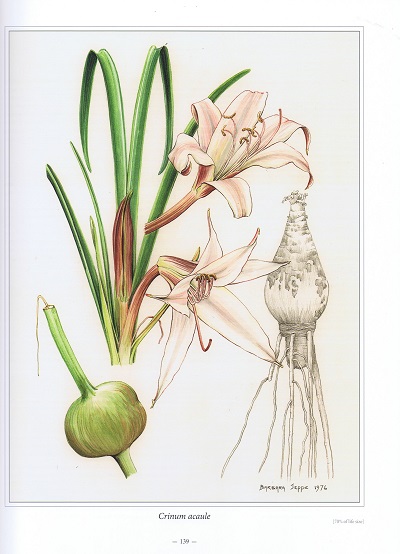
Gardeners will already recognize Amaryllis, Clivia, Crinum, and Nerine amidst the less familiar Apodolirion, Gethyllis, and Stumaria. In mild climates, Amaryllis belladonna has become naturalized, flowering leafless in autumn. However, even within the familiar garden genera are relatively unknown or less common species. Few know the rarer and less easily cultivated Amaryllis paradiscola, which is restricted to one population in the Richtersveld National Park. Clivia miniata is the most horticulturally significant representative, yet other species C. caulescens, C. gardenii, C. mirabilis, and C. nobilis possess the same resilient qualities that make them good houseplants. Graham Duncan calls Crinum acaule 'a most beautiful species wit large, showy flowers and a strong sweet fragrance', but it has yet reached the popularity of C. bulbispermum or C. moorei. Nerine sarniensis better known as Guernsey lily now sparkle conservatories and greenhouses with their jewel-like flowers. It sits squarely among 30 or so taxa that are found in South Africa.
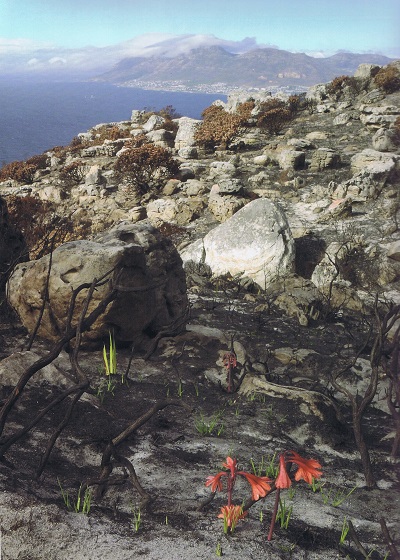
The book is peppered with color photographs depicting plants in the wild, such as the one of Cyrtanthus verntricosus after fire. Each color botanical illustration accompanies each species, showing the diagnostic characteristics of the infloresence, individual flower, foliage, seeds, and the bulb. Because leaf development does not always synchronize with flowering, Jeepe and Viogt would examine the specimens over the course of a year. It is a welcome change to defer to the time-honored tradition of using botanical illustrations when color photography has become the norm in monographs nowadays. Information is organized under the following subheadings: description, synonyms, etymology, flowering period, brief history, distinguishing features and affinities, distribution, habitat and life cycle, conservation status, and cultivation.
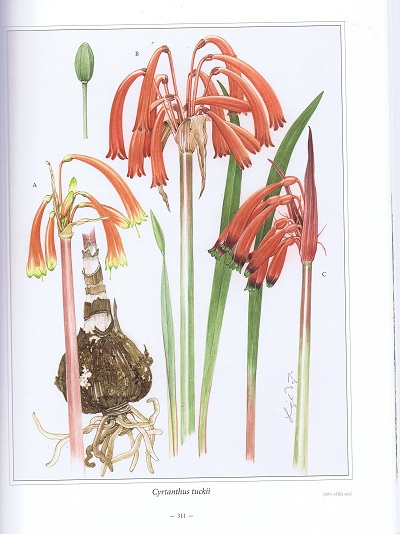
The alphabetical organization of the genera rather than a phylogenetic one makes the book easy to reference for specific species. However, the minor oversight is the placement of the keys in the back (pages 660-677) rather than the front before the genus and species treatment. It is a departure from other monographs or floras that have keys prefacing the descriptions. Following the keys are sections outlining cultivation of these amaryllids, which can be confusing for a novice grower. Duncan is careful to differentiate the amaryllids in winter rainfall and summer rainfall regions because their cultivation requirements are dissimilar. The inclusion of cultivation guidelines for those gardeners in the Northern Hemisphere is welcome as well. Asexual and sexual propagation is both covered, with seed for the former and the offsets and twin scaling for the latter. Every geophyte have their insectivorous nemesis, and the lily borer (Brithys crini) feeds voraciously on the foliage before moving downwards into the bulb. However, with due vigilance, the borer larvae can be controlled mechanically or with a carbyl-based insecticide. Duncan makes it clear that viral disease and bacterial soft rot can do undue damage and death in amaryllids. A glossary and an index of plant names (including synonyms) is included in the last couple pages.
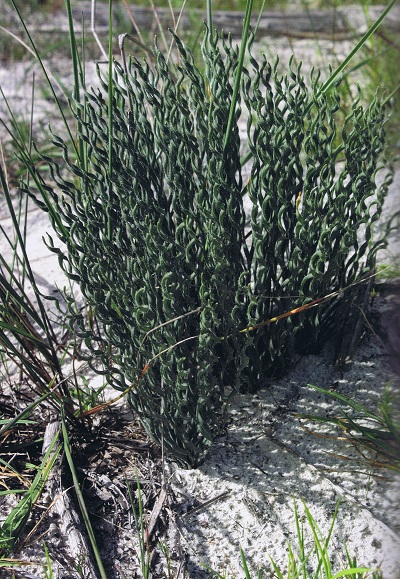
Graham Duncan must be applauded on the herculean task of writing such a thorough and systematic treatment of the Southern African Amaryllidaceae. It would be a disservice not to honor the mother-daughter team Barbara Jeppe and Leigh Voigt whose unfailing commitment and patience in illustrating these geophytes inspired the book in the first place. The Amaryllidaceae of Southern Africa will continues confidently in the tradition of botanical references that document the Cape Flora.





